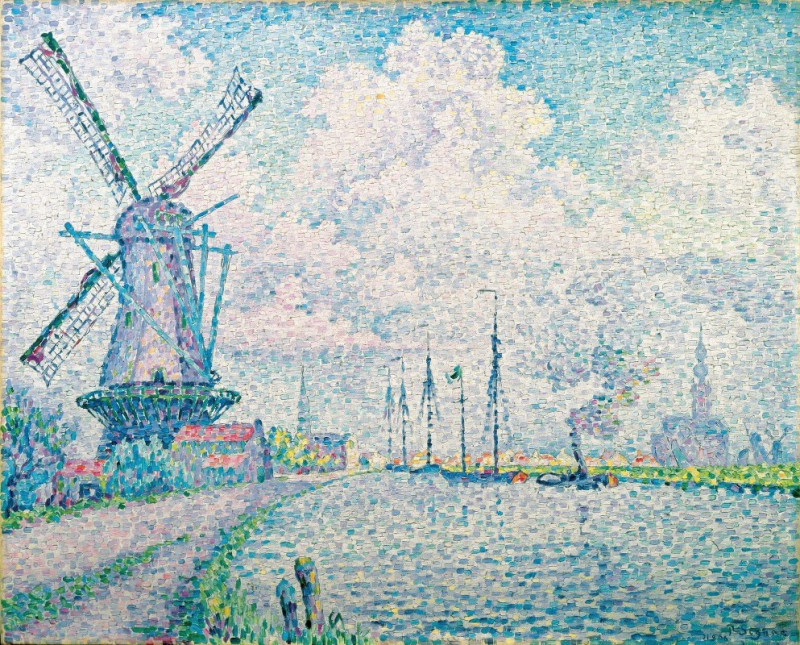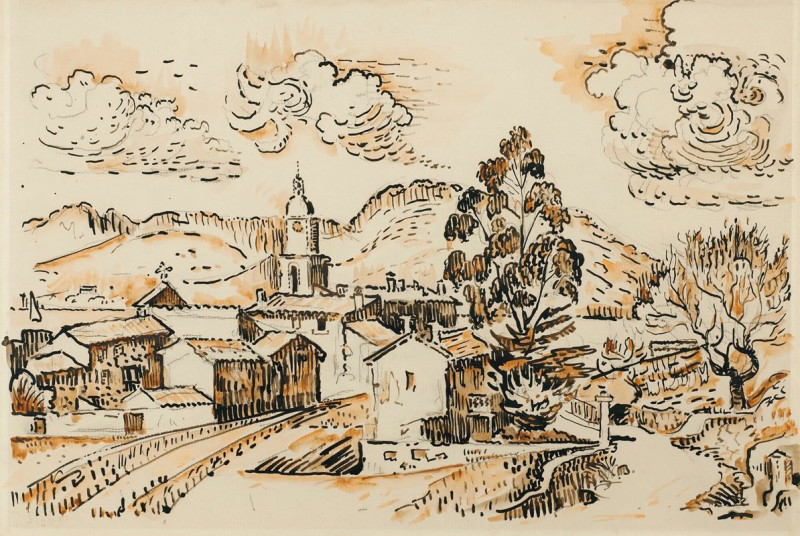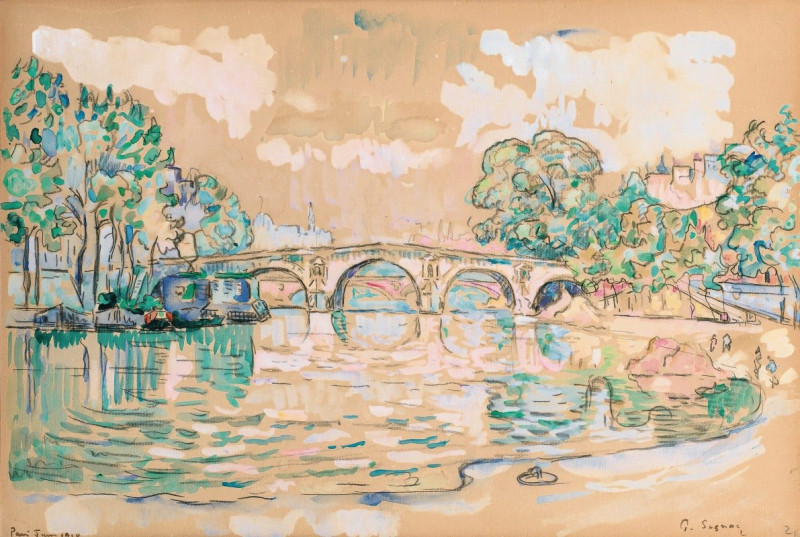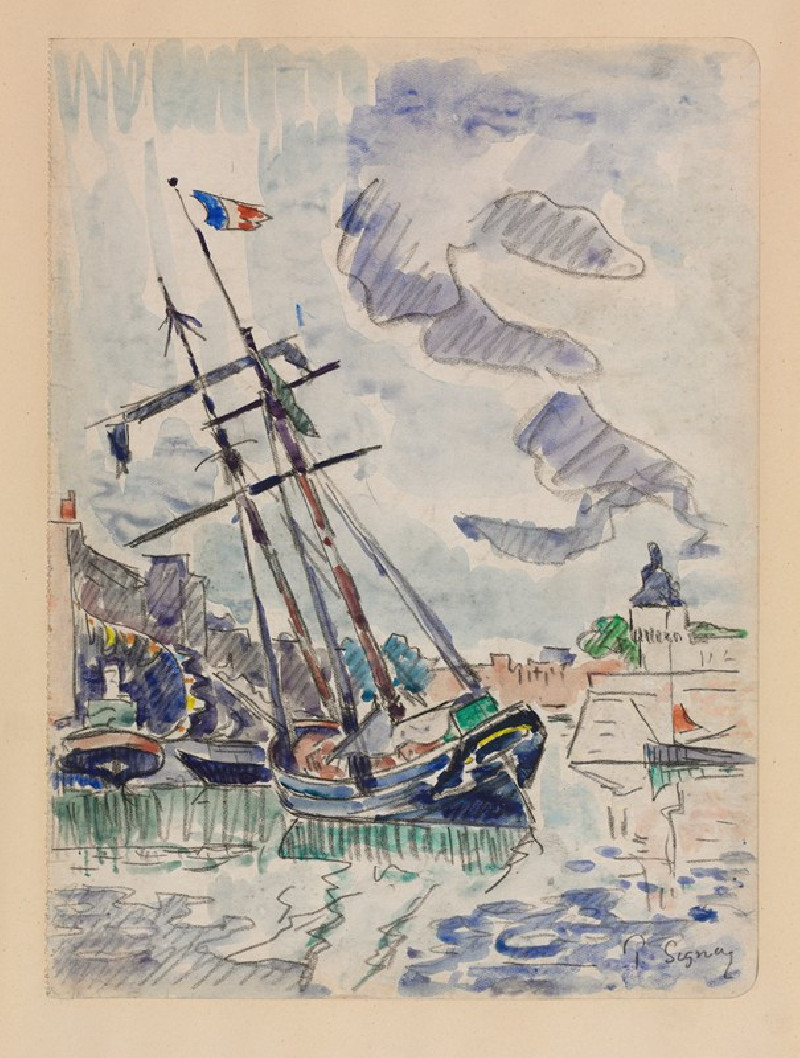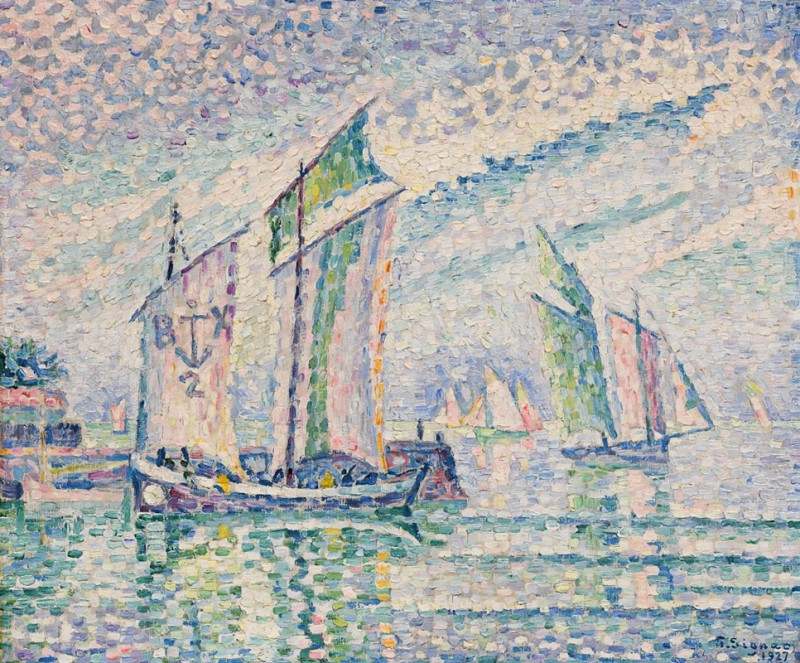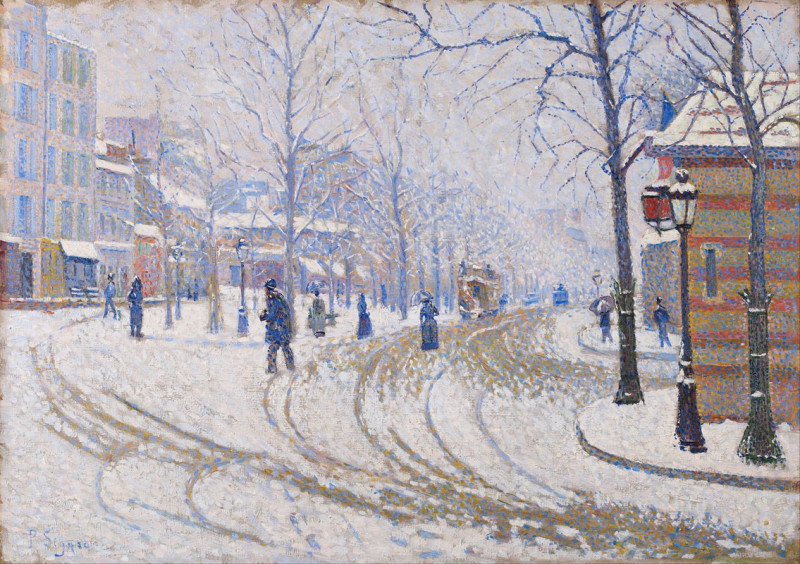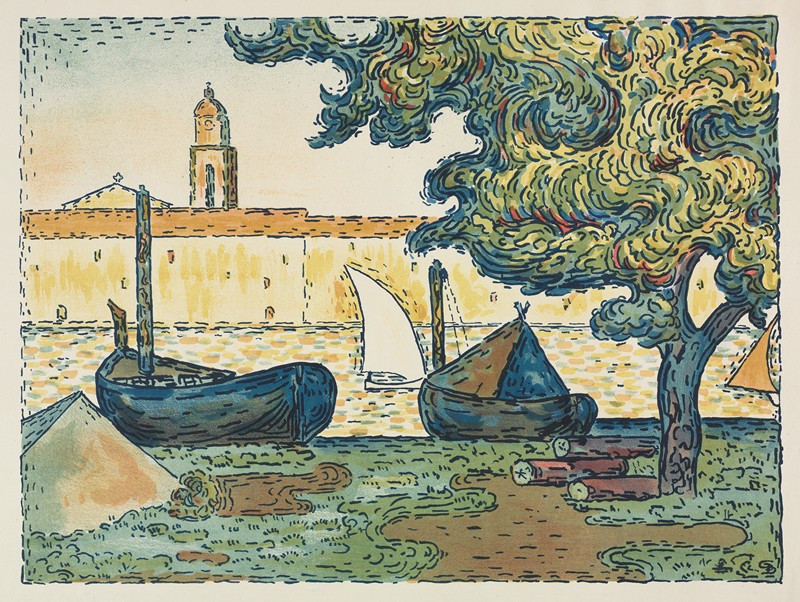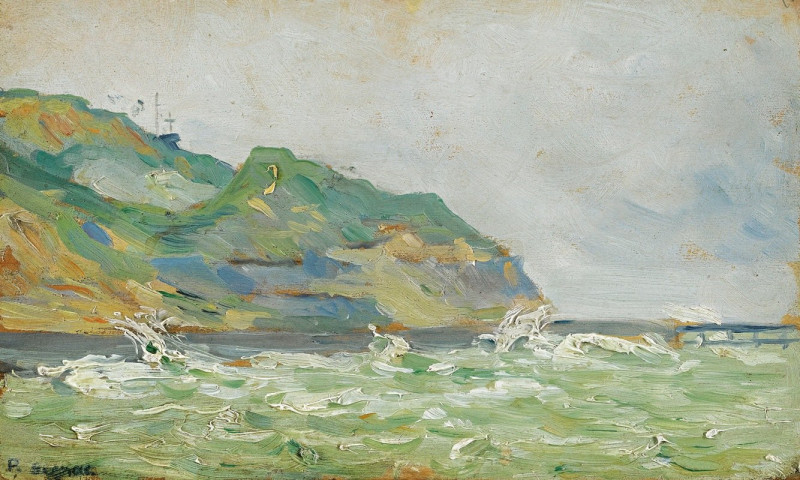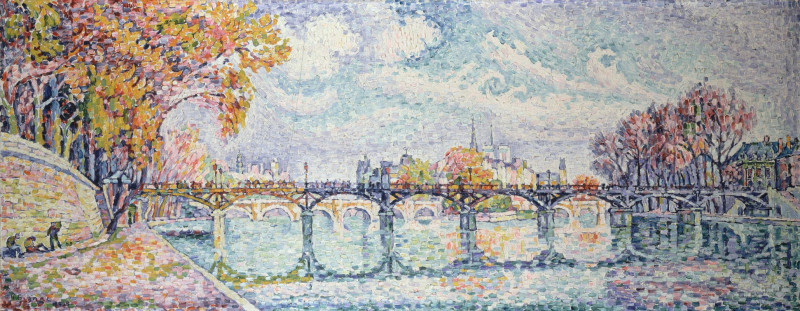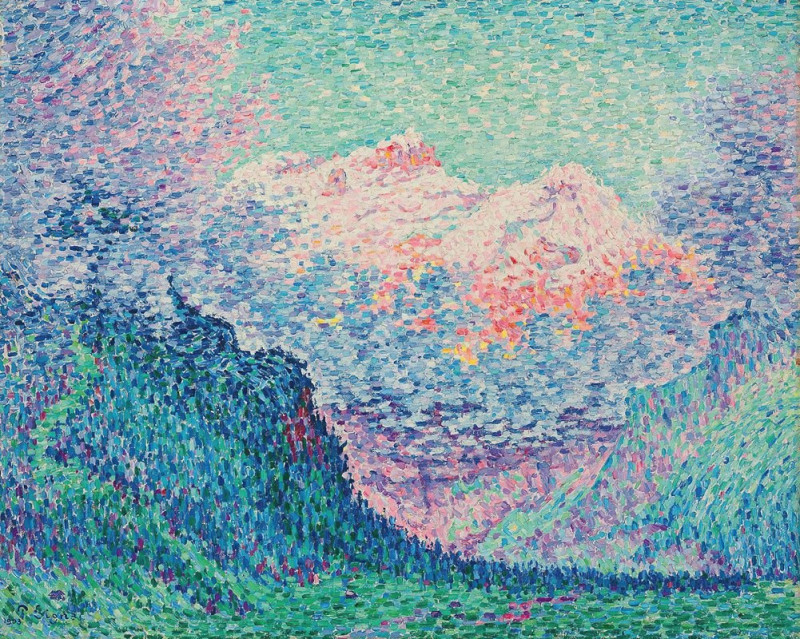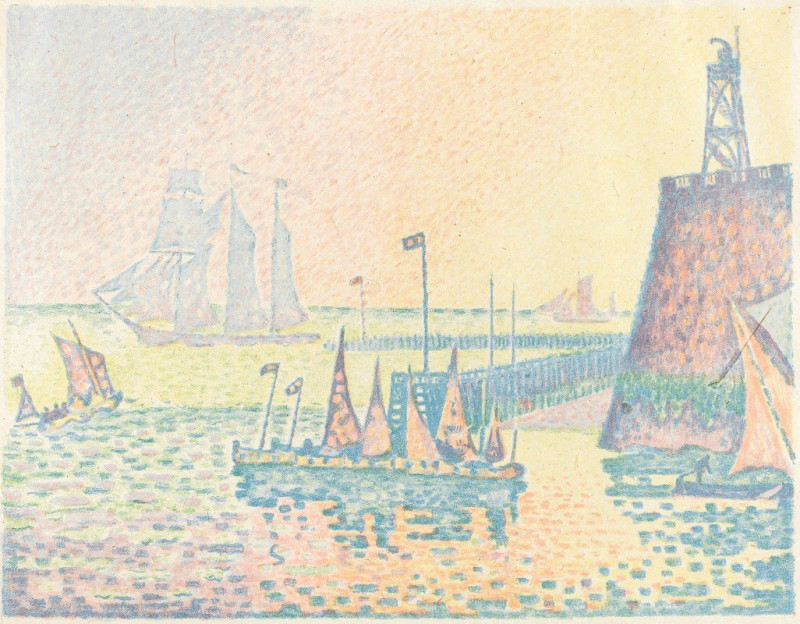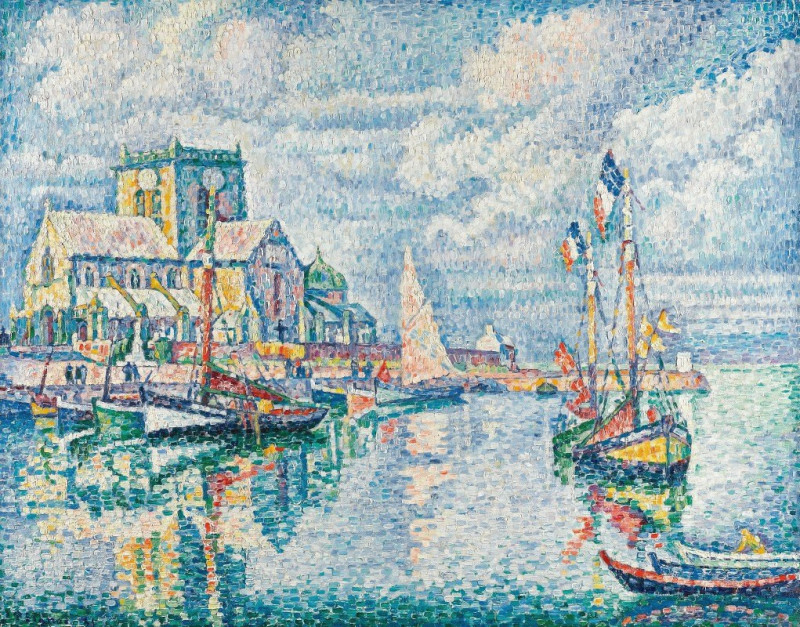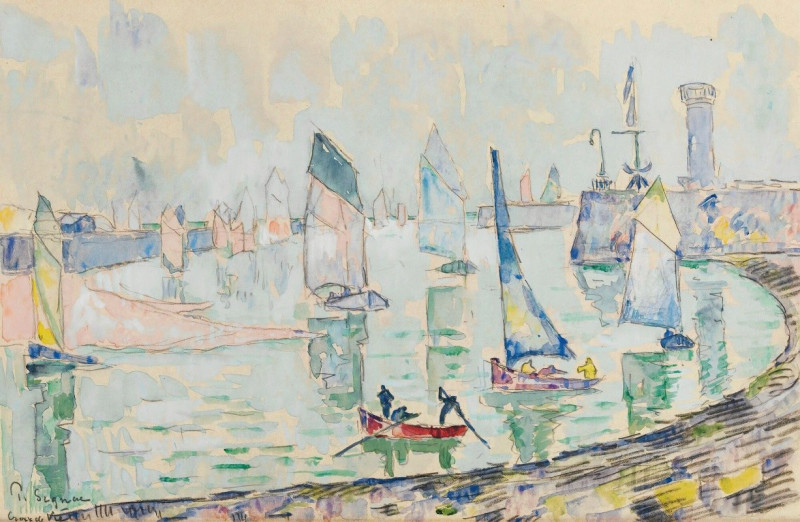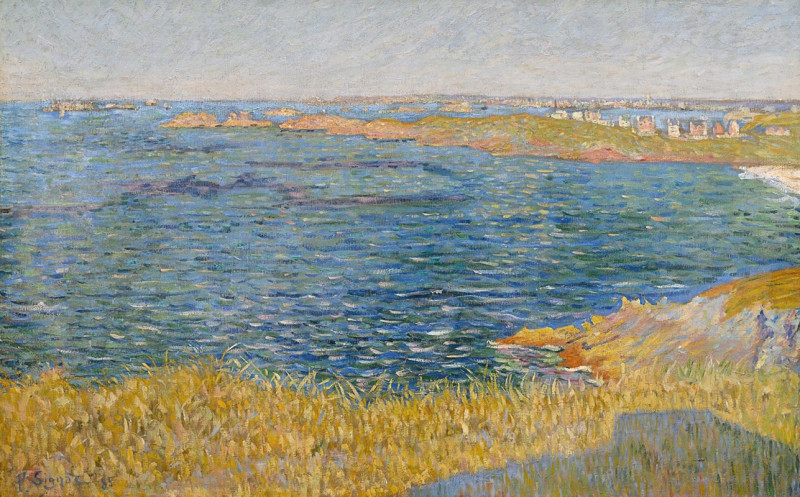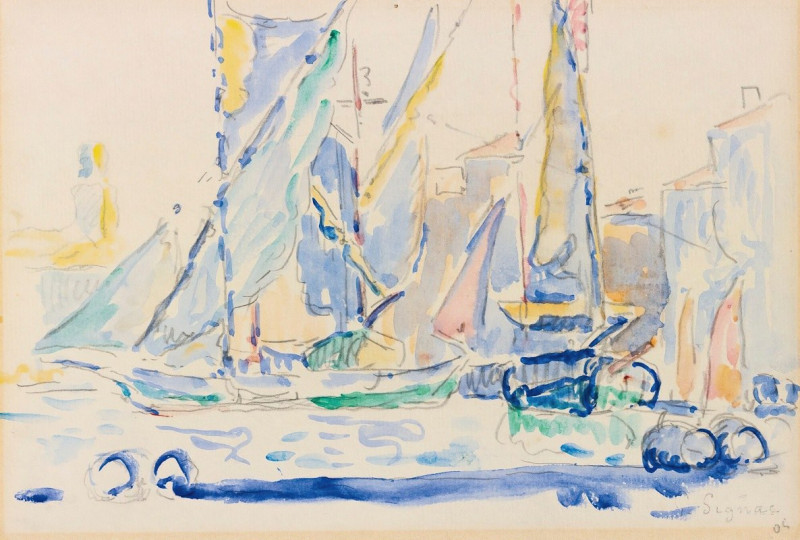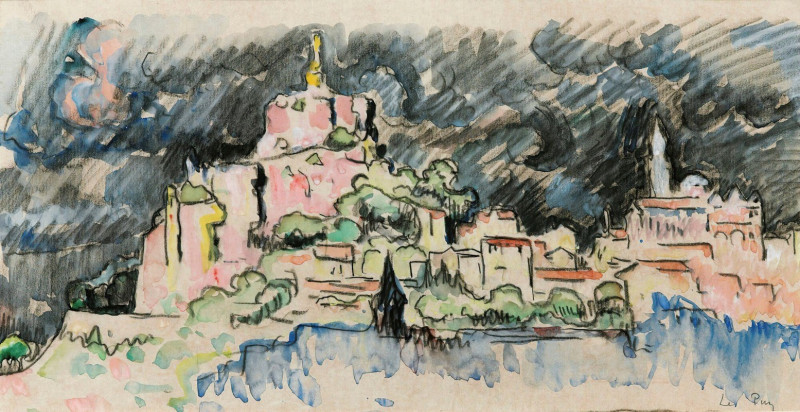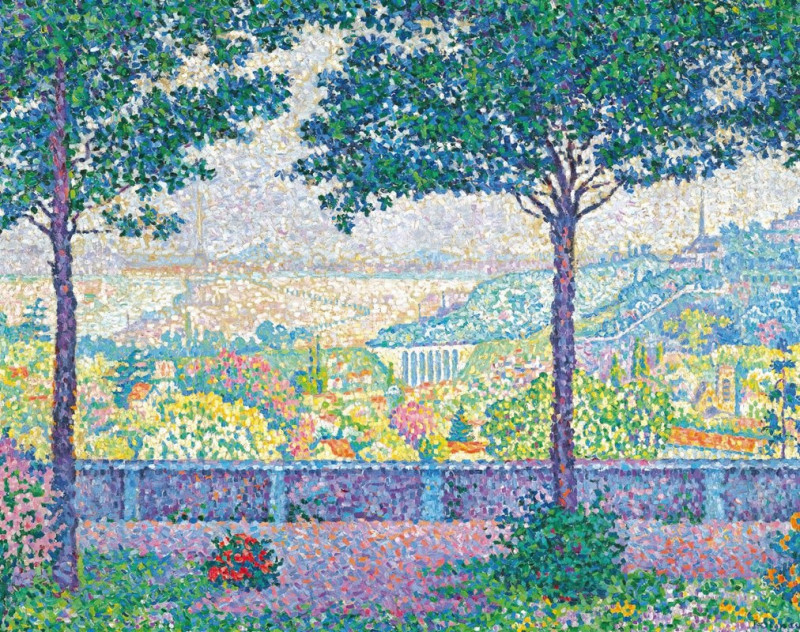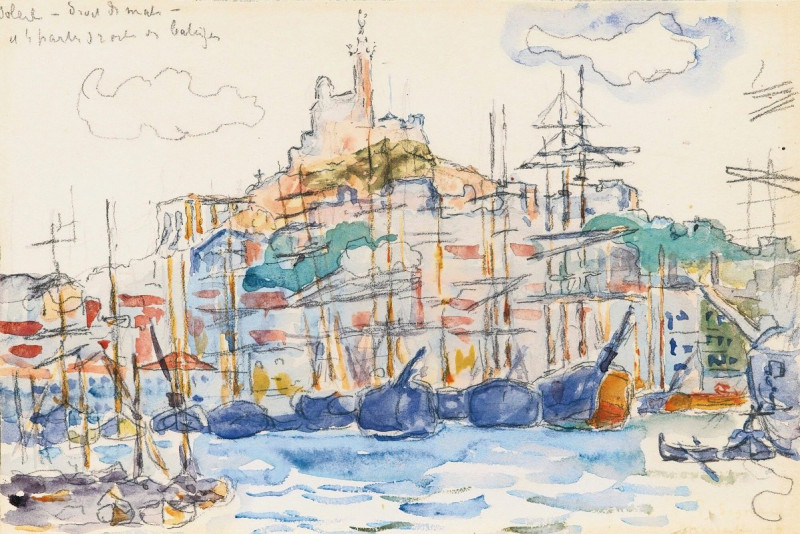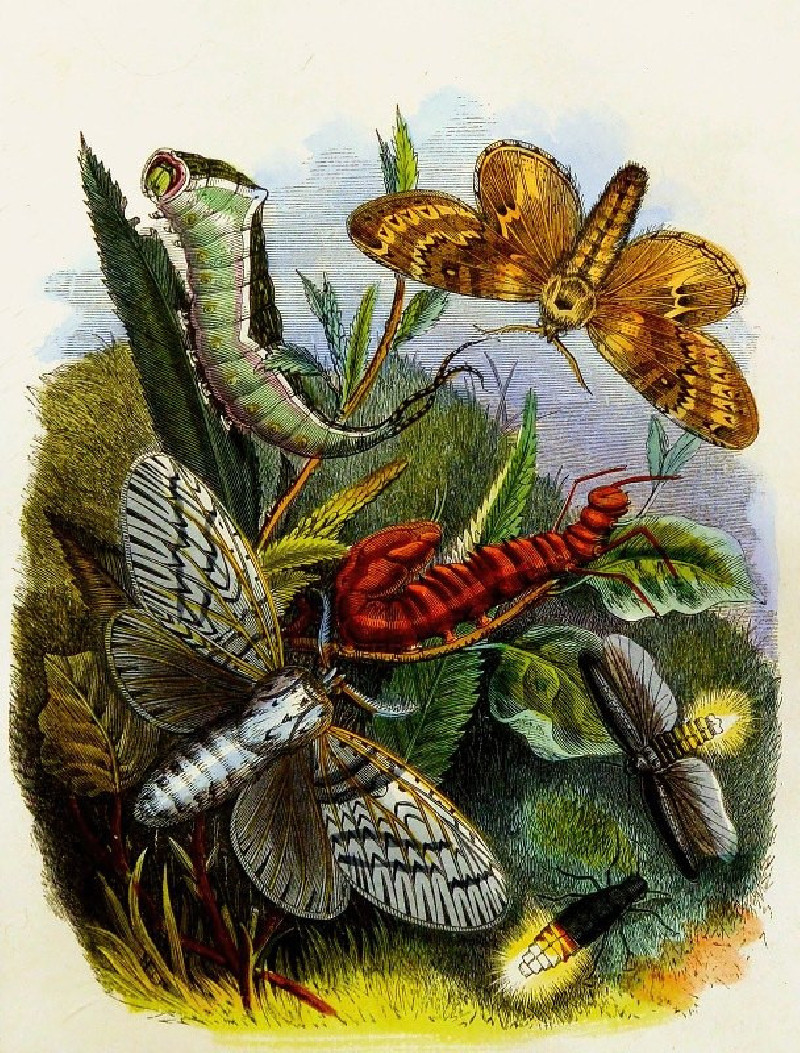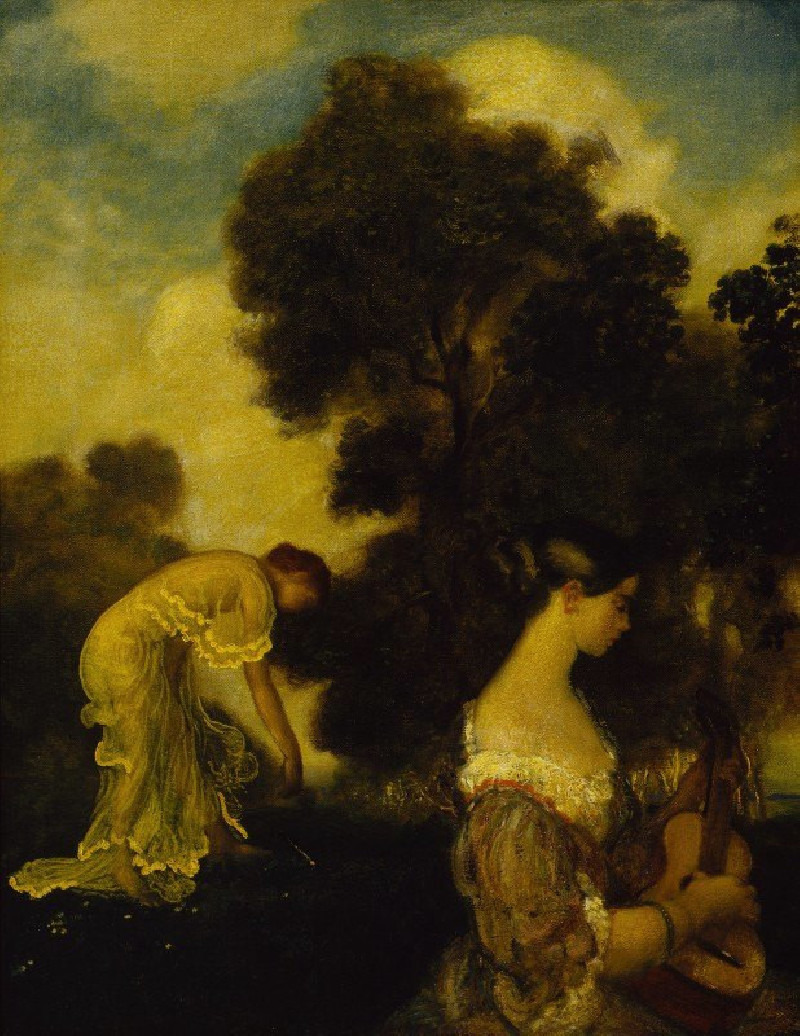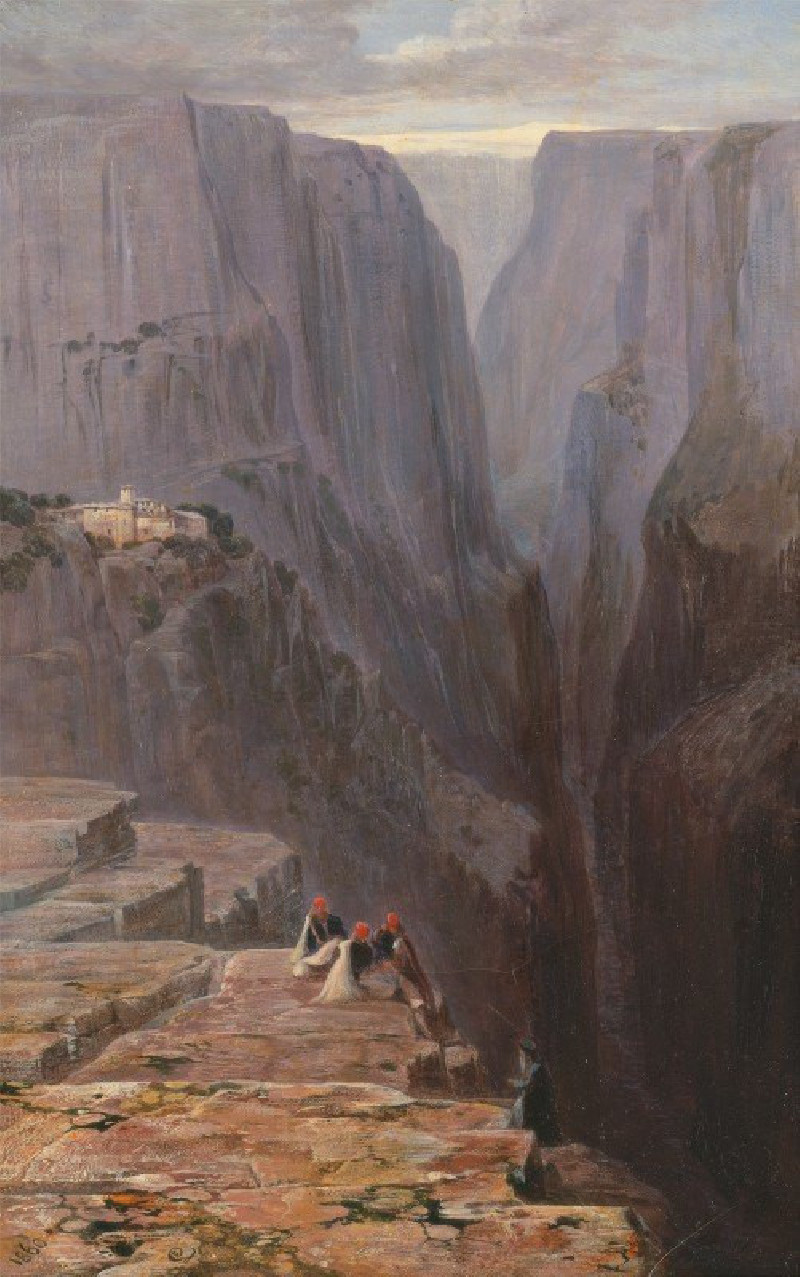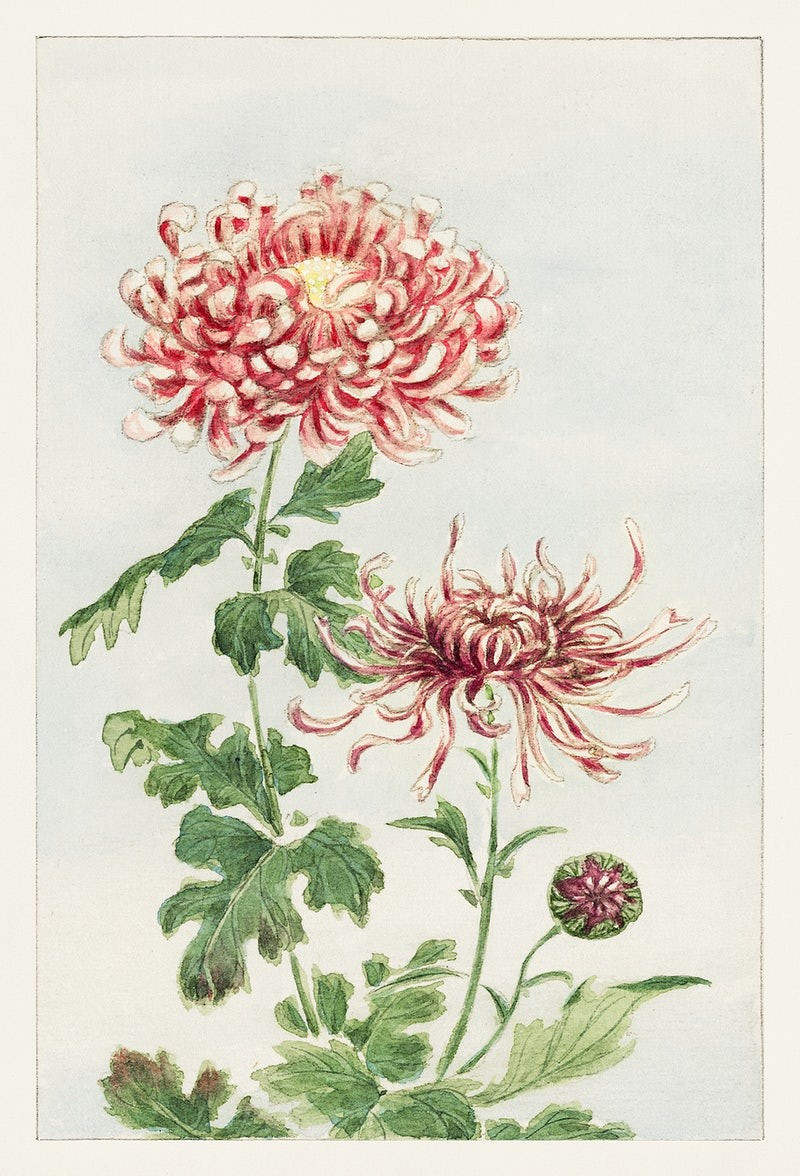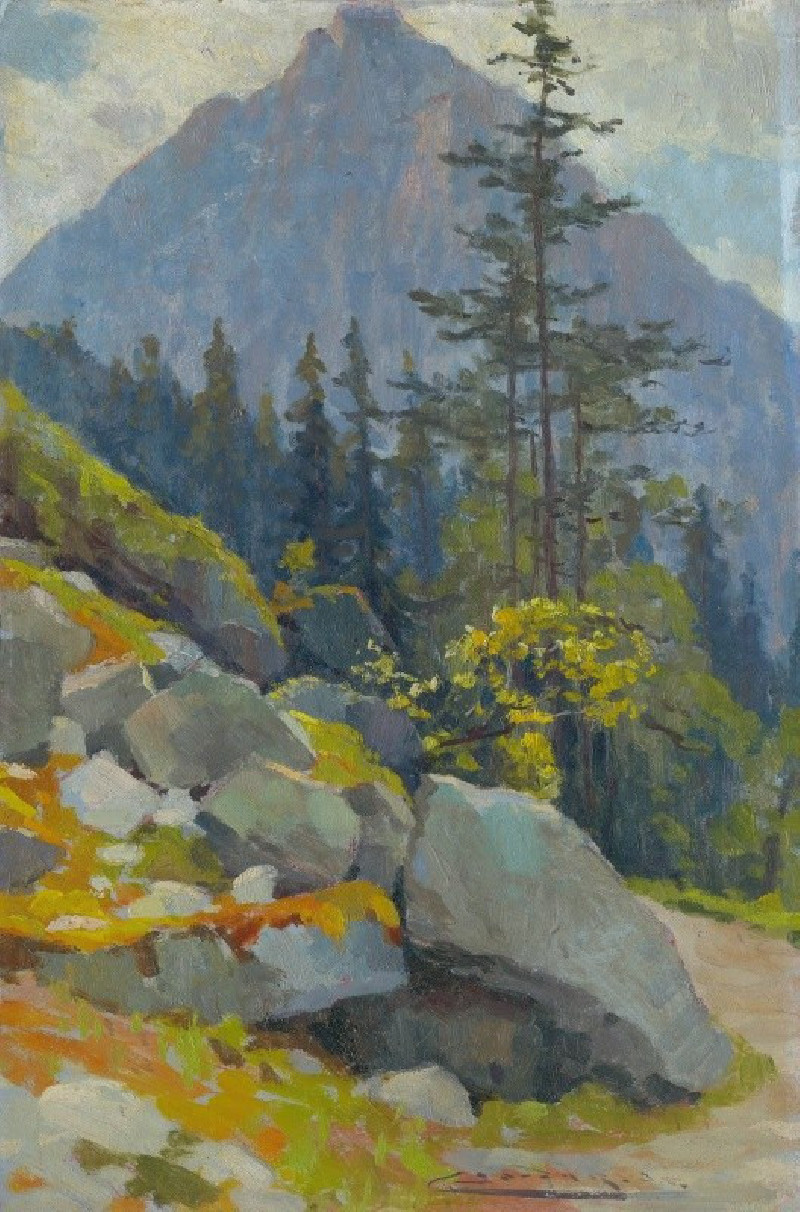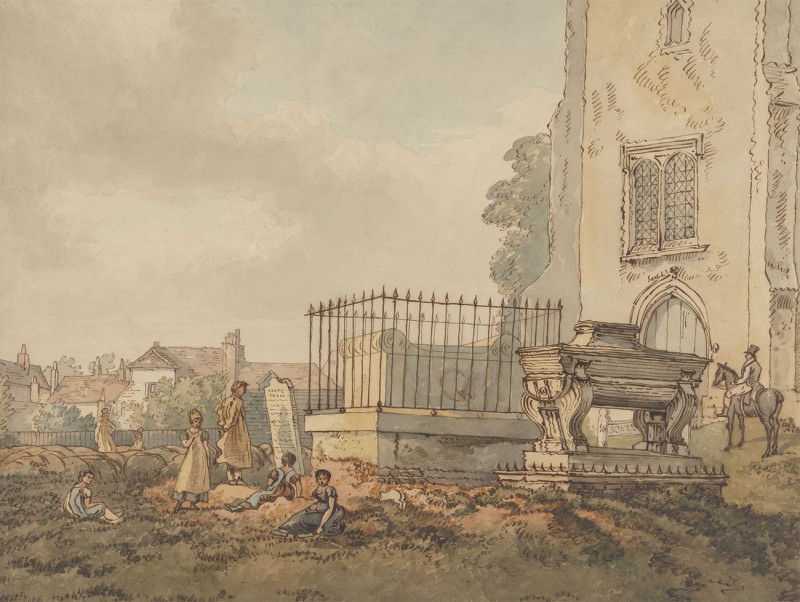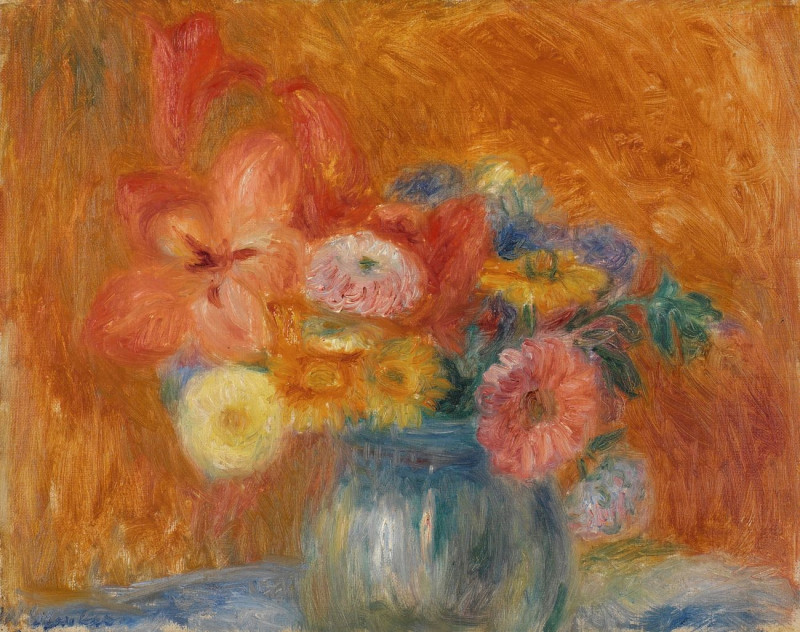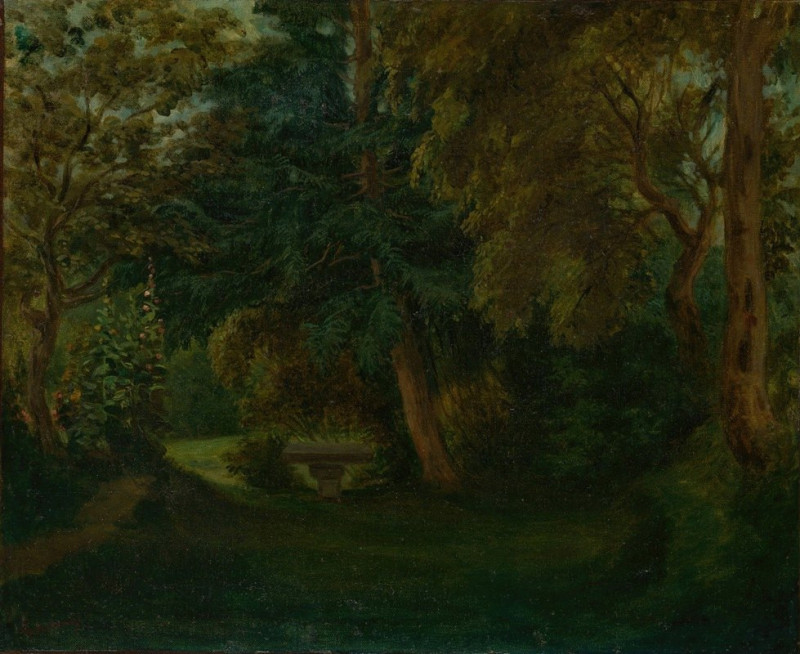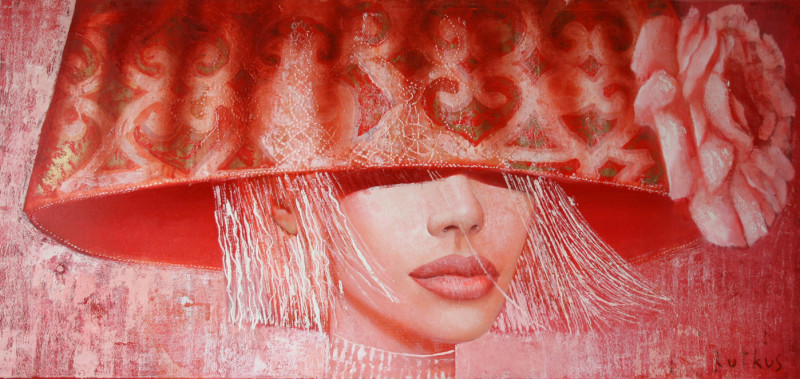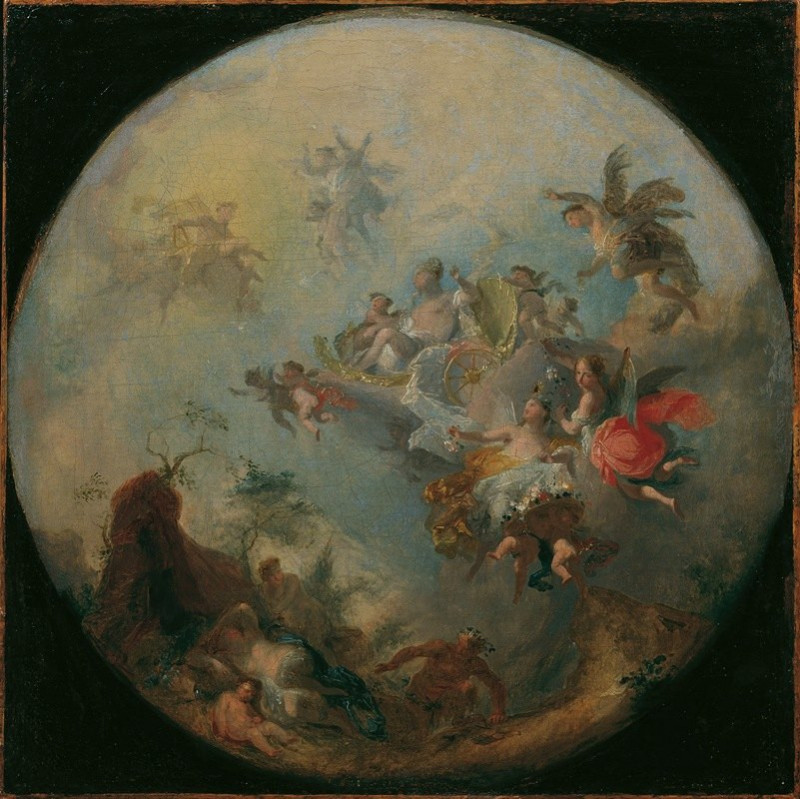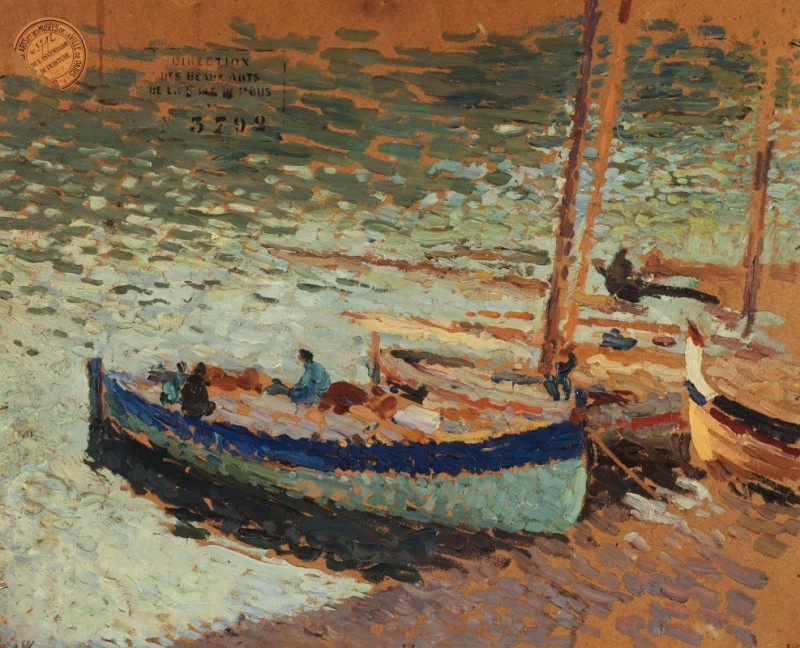Canal of Overschie
Technique: Giclée quality print
Recommended by our customers
More about this artwork
Paul Signac's enchanting painting, "Canal of Overschie," vibrantly captures a serene landscape marked by the artist's distinct pointillist technique. In this splendid artwork, viewers are taken to a tranquil canal setting, where a traditional Dutch windmill towers gracefully on the left side of the composition. Its impressive structure stands as a testament to the Netherlands' rich history and cultural heritage concerning windmills.The painting is awash in a plethora of small, meticulous strokes of color, typical of the pointillism art movement, which Signac helped pioneer. These dots coalesce into a vivid portrayal of the water's shimmering surface, reflecting a sky scattered with fluffy, luminescent clouds. Along the canal's banks, gentle hues of green and earthen tones suggest the presence of vegetation, enhancing the scene’s peaceful ambiance.In the distance, hints of a bustling village are visible through the mist-like quality of Signac's brushwork, suggesting the daily life that pulsates quietly beyond the immediate calm of the canal. This juxtaposition invites the viewer to appreciate the blend of natural beauty and human habitation, all rendered in a spectrum of bright, harmonious colors."Canal of Overschie" is more than just a visual treat; it's a delightful meditation on the placid rhythms of rural life, seen through the lens of an artist utterly in love with color and light.
Delivery
Returns
Paul Signac (1863-1935) was a French Neo-Impressionist painter. Together with Georges Seurat, Signac developed the Pointillism style. He was a passionate sailor, bringing back watercolor sketches of ports and nature from his travels, then turning them into large studio canvases with mosaic-like squares of color. He abandoned the short brushstrokes and intuitive dabs of color of the impressionists for a more exact scientific approach to applying dots with the intention to combine and blend not on the canvas, but in the viewer's eye.

